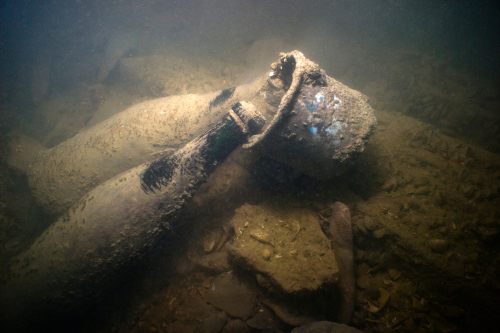Chateau Larrivet Haut Brion have been conducting an experiment recently in partnership with a barrel maker and an oyster farmer to test the myth, as to whether wine ages better below water or above it.
Larrivet Haut Brion lies in Pessac Leognan on a gravel ridge alongside Chateaux Haut Bailly and La Louvière. This is an old estate but is quite separate and independent from the Chateau Haut Brion properties which lie further north. Unlike Chateau Carmes Haut Brion Larrivet was never part of the Haut Brion vineyards but acquired the name Brion as this was the local word for gravel hill.
Chateau Larrivet Haut Brion was acquired by the Gervoson family in 1987 who restored the estate and now have 72 hectares under vine: 55% Merlot, 40% Cabernet Sauvignon, and 5% Cabernet Franc as well as 60% Sauvignon Blanc and 40% Sémillon for their white wine – which is well worth looking out for (see my blog here).
French news agency AFP reported that Bruno Lemoine, Managing Director and Winemaker at the chateau, found the idea of ageing wine under the sea intriguing:
“One of the earliest known sea vintages dates from the 18th century, when the Bordeaux baron Louis-Gaspard d’Estournel sent a shipment of wine to India, whose unsold bottles returned to France mysteriously improved by the hull journey.
The most recent — and extreme — case dates from Friday, when 11 bottles of the world’s oldest champagne, salvaged in 2010 from a Baltic Sea shipwreck, were auctioned off in Finland for 109,280 euros ($136,000).
The six bottles of Juglar, four of Veuve Clicquot and one of Heidsieck & Co, were preserved or even improved in the 200 years since the wreck, experts believe, thanks to the ideal conditions found on the chilled, lightless bed of the Baltic.
“I found the whole idea amusing and intriguing,” Lemoine said. “So when in 2009 we found ourselves with an exceptional vintage, full of rich tannins, I decided to put it to good use.”
Incidentally the Cos d’Estournel sea vintage mentioned above refers to wines shipped to India, which had to be returned for some reason – and the “The Maharaja of St. Estephe”, as Louis Gaspard d’Estournel was often referred to, rather cleverly marketed them as being improved by the sea voyage. He had their labels marked with an ‘R’ which stood for ‘Retour des Indes’ and they went down a storm (so to speak).
Lemoine asked his barrel-maker friend Pierre-Guillaume Chiberry to build him two small 56-litre wooden barrels in which to age his red wine by an extra six months. One was to be kept in the chateau cellars, the other sunk underwater amongst the oyster beds of the Bay of Arcachon. The barrel kept at the chateau was named ‘Tellus’, after the Roman goddess of the land, and the other ‘Neptune’ after the sea god.
Neptune was picked up by Lemoine’s oyster farmer friend Joel Dupuch and rowed out to the low tide mark, where it was chained inside a concrete chamber that kept it protected while letting the water flow in and out. The barrel could roll with the current and was very exposed to the wind and the weather, being briefly exposed to the air, around 25 or 30 times over a six-month period.
Both barrels were retrieved in January and the wine was bottled, tasted and analysed in a laboratory. Neptune surprised everyone, being mellower and more complex than its on-land relative. Lab tests confirmed that the wine was subtly changed by its ocean environment through a process of osmosis. On the one hand the wine lost some of its alcohol content, while on the other it saw its sodium concentration rise, adding a subtly salty note that complimented the tannins.
Lemoine intends to continue monitoring Neptune’s progress to see how it evolves over the coming decade.
Photo Credits: Philippe Roy.

